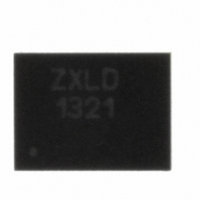ZXLD1321DCATC Diodes Zetex, ZXLD1321DCATC Datasheet - Page 9

ZXLD1321DCATC
Manufacturer Part Number
ZXLD1321DCATC
Description
IC LED DRVR WHITE BCKLGT 14-TDFN
Manufacturer
Diodes Zetex
Type
Backlight, White LEDr
Datasheet
1.ZXLD1321DCATC.pdf
(20 pages)
Specifications of ZXLD1321DCATC
Topology
PWM, Step-Up (Boost)
Number Of Outputs
1
Internal Driver
Yes
Type - Primary
Flash/Torch
Type - Secondary
High Brightness LED (HBLED), White LED
Frequency
600kHz
Voltage - Supply
2 V ~ 12 V
Mounting Type
Surface Mount
Package / Case
14-TDFN
Operating Temperature
-40°C ~ 125°C
Current - Output / Channel
1A
Internal Switch(s)
Yes
Efficiency
85%
Lead Free Status / RoHS Status
Lead free / RoHS Compliant
Voltage - Output
-
Other names
ZXLD1321DCATR
Available stocks
Company
Part Number
Manufacturer
Quantity
Price
Company:
Part Number:
ZXLD1321DCATC
Manufacturer:
ST
Quantity:
165
ZXLD1321
Device description
The ZXLD1321 is a inductive boost DC-DC converter, with an internal switch, designed for driving
single or multiple LEDs in series up to a total of 1A output current. Depending upon supply
voltage (V
), LED forward voltage drop (V
) and circuit configuration, this can provide up to
IN
LED
8W of output power.
Applications cover V
ranging from 1.2V to 12V.
IN
The device employs a modified Pulse Frequency Modulation (PFM) control scheme, with variable
"ON" and "OFF" time control and adjustable peak switch current limiting.
General device operation (refer to block diagram)
Normal operation
Control is achieved by sensing the LED current in a series resistor (R
), connected between the
M
two inputs of the LED Current Monitor. This generates a proportional current (IMON) that charges
the external integrator capacitor C
. I
is balanced against a reference discharge current (I
)
FB
MON
ADJ
generated at the output of a second voltage to current converter driven from the demand voltage
(V
on the ADJ pin. The difference between I
and I
is integrated by C
to produce an
ADJ)
MON
ADJ
FB
error voltage. A comparator takes a summed version of the voltage at the ISENSE pin and a
fraction of this CFB voltage and resets the latch driving the switch when the sum is greater than
50mV. The switch transistor is turned on by the output of the SR latch, which remains set until the
emitter current in the switch transistor produces a voltage drop Vsense (=50mV nominal) in
external resistor Rsense, defining a preset maximum switch current of 50mV/Rsense. Operation
is such that a rising error voltage on CFB will effectively lower the voltage required on the ISENSE
pin and therefore reset the latch earlier in the switching cycle. This will reduce the 'ON' time of
the switch and reduce the peak current in the switch from its preset maximum value. Similarly, a
falling error voltage will reset the latch later and the peak switch current will be increased. The
control loop therefore reduces or increases the energy stored in the coil during each switching
cycle, as necessary, to force the LED current to the set value. This results in high accuracy, as no
error is needed in the LED current to drive the servo to the required region.
The time taken for the coil current to reach the peak value depends on several factors: the supply
voltage, the peak coil current required at that particular LED power and whether the system
operates in "continuous" or "discontinuous" mode. The time allowed for the coil current to
discharge into the LED is fixed by the 'Variable Off Delay' monostable, whose period is modified
by the power demand signal on the ADJ pin. This monostable determines the time for which the
latch remains reset (switch off) and provides a longer "OFF" period at lower power settings,
helping to keep the parameters within an acceptable range.
Note that the "ON" period and the "OFF" period are set by the supply voltage, LED power and
external components chosen. The frequency is therefore determined by these parameters and is
NOT fixed. In this modified PFM scheme, the external components can be chosen to keep the
frequency well above the audio range for all extremes of parameters, so no audible whistling
should ever occur.
The 500mV reference voltage defines the nominal VADJ voltage and this defines the 100% output
current. For lower LED currents, the ADJ pin can be-driven from an external dc voltage
(50mV<VADJ<500mV) or a low frequency Pulse Width Modulated (PWM) waveform.
Issue 1 - January 2008
9
www.zetex.com
© Zetex Semiconductors plc 2008



















